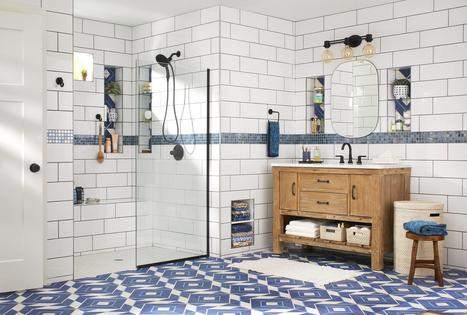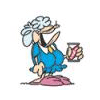Pink mold in your shower? What it is and how to get rid of it
Ever notice a slimy pink or reddish film on your shower walls and grout lines? This sticky substance — often called pink mold — is usually found in warm, moist environments that lack proper ventilation, like bathrooms. Learn all about it as home experts answer questions about pink mold, its causes, and the best ways to get rid of it for good.
What is pink mold?
First, pink mold is not mold, even though that’s what many people call it, along with pink mildew and pink slime. The substance is a combination of unsightly microbes. “It’s a type of waterborne bacteria called Serratia marcescens,” says Eliana Coca, owner of E.C. House Cleaning. “It thrives in moist environments and feeds on fatty substances like soap scum and shampoo residue, making bathrooms a common battleground."
Pink mold is unlikely to harm most healthy people. “It’s a mix of very common microbes that are generally in everyone’s home at all times,” says Nick Valentino, VP of market operations at Bellhop Atlanta Movers.
However, it could cause an infection if it gets into the eyes or an open wound. This is a particular concern for small children and people who are immunocompromised. So while pink mold is not generally harmful, it’s good practice to tackle it early and often.
Pink mold causes
Pink mold grows quickly under the right conditions, including damp and warm places filled with organic material, says Coca, making bathtubs and showers easy targets. The bacterial colony thrives on wet surfaces, like tile grout, silicone seals, shower tile walls, and shower curtains. The sticky stuff also likes organic matter that offers nutrients to help the bacteria thrive, like soap scum, shampoo residue, dead skin cells, and body oils. “What leads to those pink, slimy colonies is an excess of moisture and a lack of regular cleaning,” says Valentino.
How to remove pink mold from the shower
Getting rid of pink mold starts with a good cleaning. To begin, Coca advises that the bathroom should be well-ventilated and that anyone tackling this yucky stuff wear gloves. “Cleaning practices to effectively remove pink mold include using a solution of one part vinegar to one part water, or for more stubborn cases, a bleach-based bathroom cleaner,” she says.
After creating the cleaning solution, scrub the surface with a scrub brush, sponge, or scrubbing pad. “Removing a well-established colony of pink mold is a matter of being thorough and persistent,” says Valentino. He recommends starting with a baking soda solution to remove most of the material, followed by repeatedly targeting the area with bleach.
Be sure to rinse the area when you’re finished. While it could take more than one cleaning to do the trick, frequent cleaning is necessary to prevent it from coming back.
How to prevent pink mold
Prevention is not just about a thorough one-time clean. “The best way to keep pink mold in check is to regularly clean your tub or shower with a bleach solution at least once weekly, and to make sure your bathroom is adequately ventilated,” Valentino advises.
Coca adds: “Regularly cleaning and drying shower walls and floors are crucial because Serratia marcescens can quickly colonize when there’s enough moisture and organic material to feed on.” She notes that a mold-free shower means regularly wiping down surfaces to prevent soap scum build-up and ensuring the area is completely dry.
Proper ventilation keeps dampness and moisture levels under control. “If you have an exhaust fan, make sure you run it for several minutes after every bath or shower,” says Valentino.
Open windows and doors after your shower or bath to ensure any moisture dissipates. To prevent pink mold from coming back, Coca recommends drying towels, shower curtains, rugs, mats, sponges, and washcloths after every use.
Don’t panic if you find pink mold
If pink mold appears in your bathroom, remember it is common. There’s no need to worry. It is typically harmless and easily treatable with household cleaners and some elbow grease. Increase the frequency of cleaning and improve the ventilation in your bathroom to ensure that your tub and shower stay pink mold-free.
(Better Homes and Gardens is a magazine and website devoted to ideas and improvement projects for your home and garden, plus recipes and entertaining ideas. Online at www.bhg.com.)
©2024 Dotdash Meredith. All rights reserved. Used with permission. Distributed by Tribune Content Agency, LLC.






























Comments